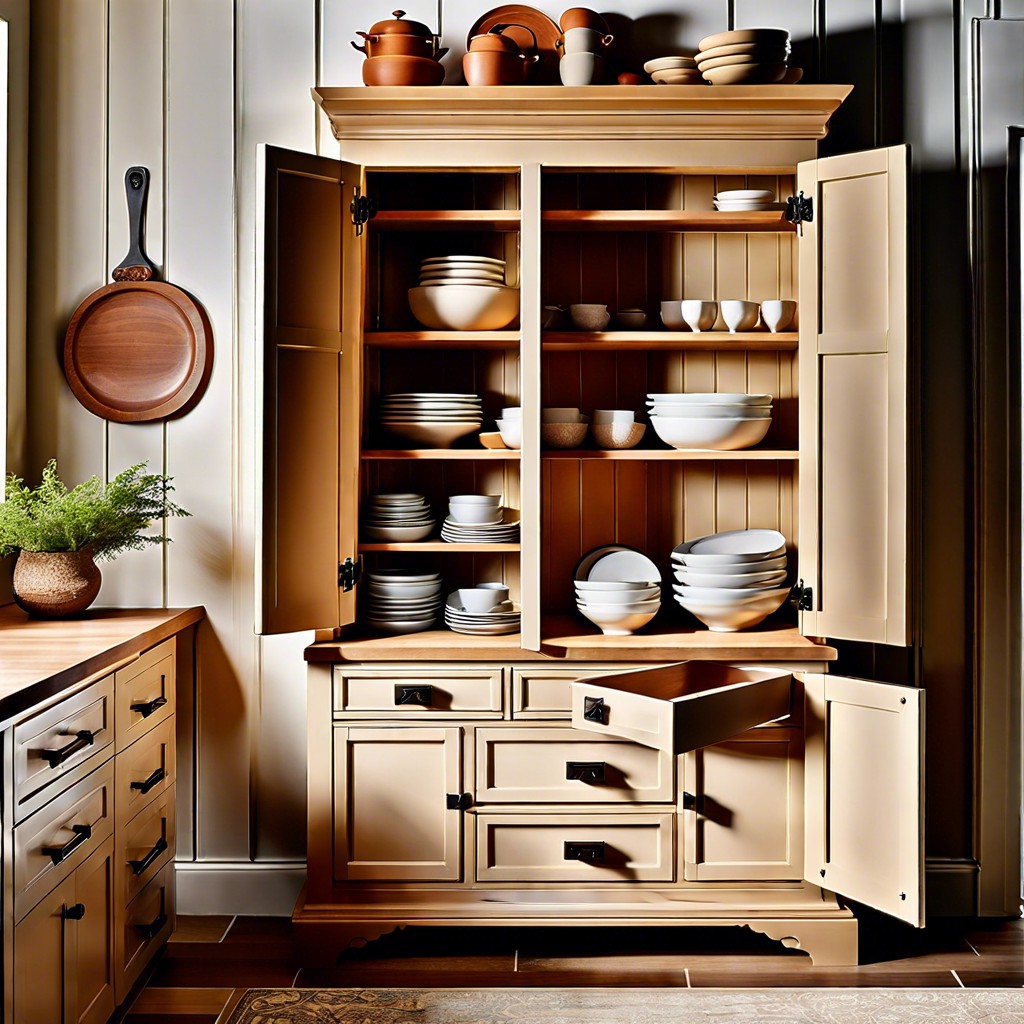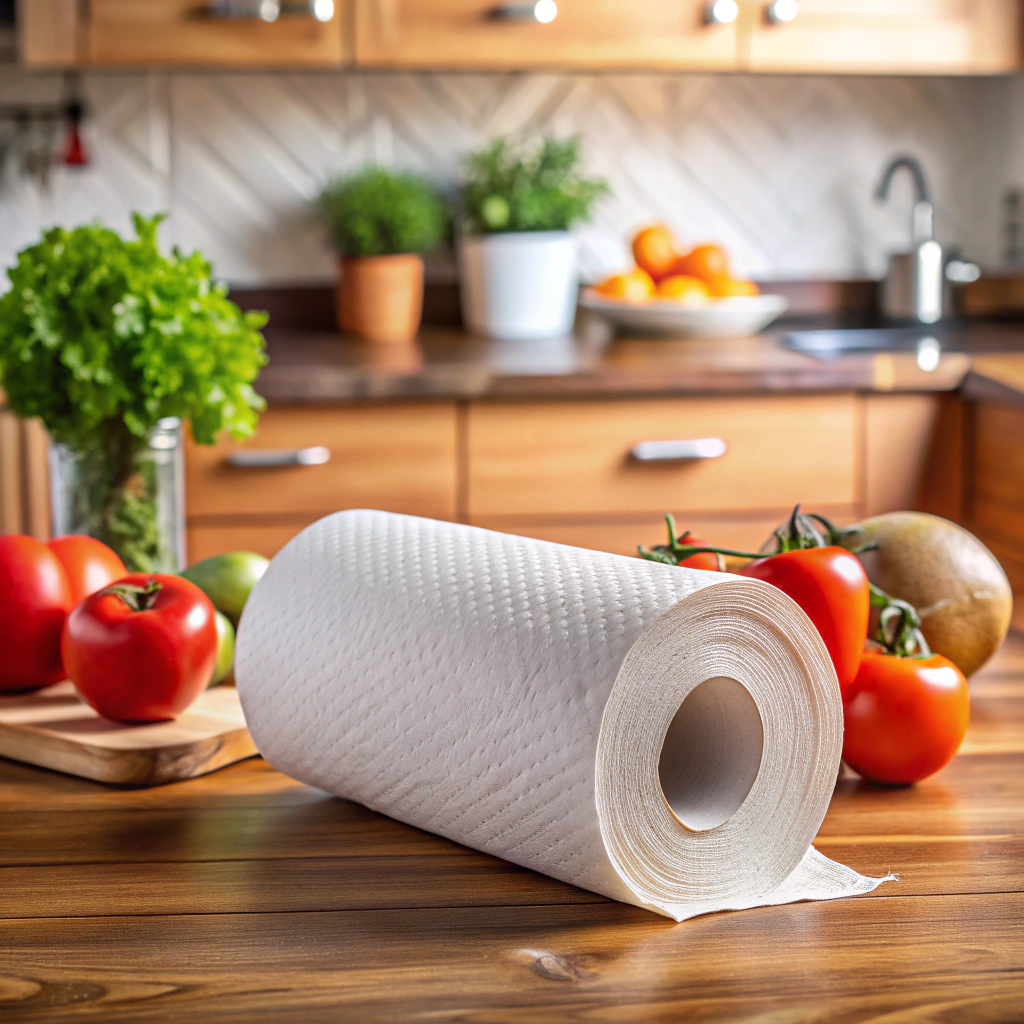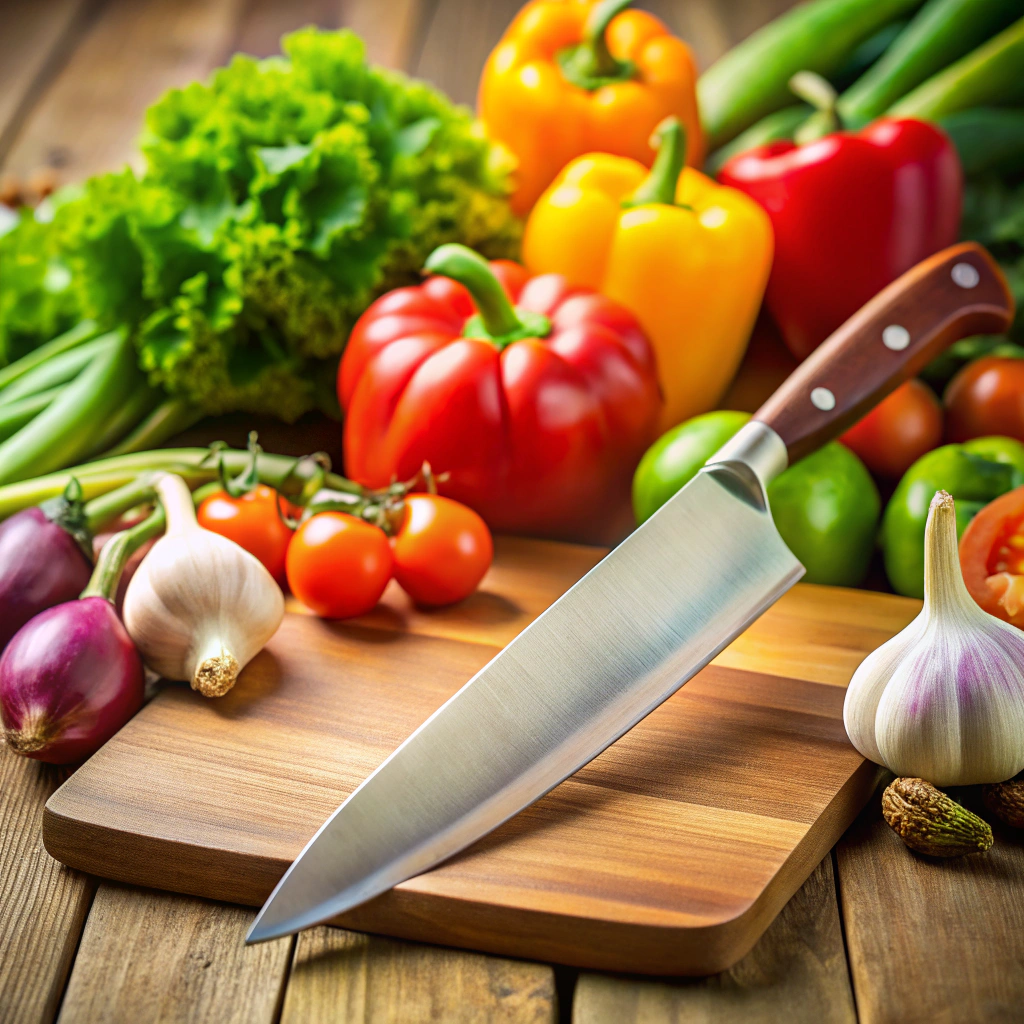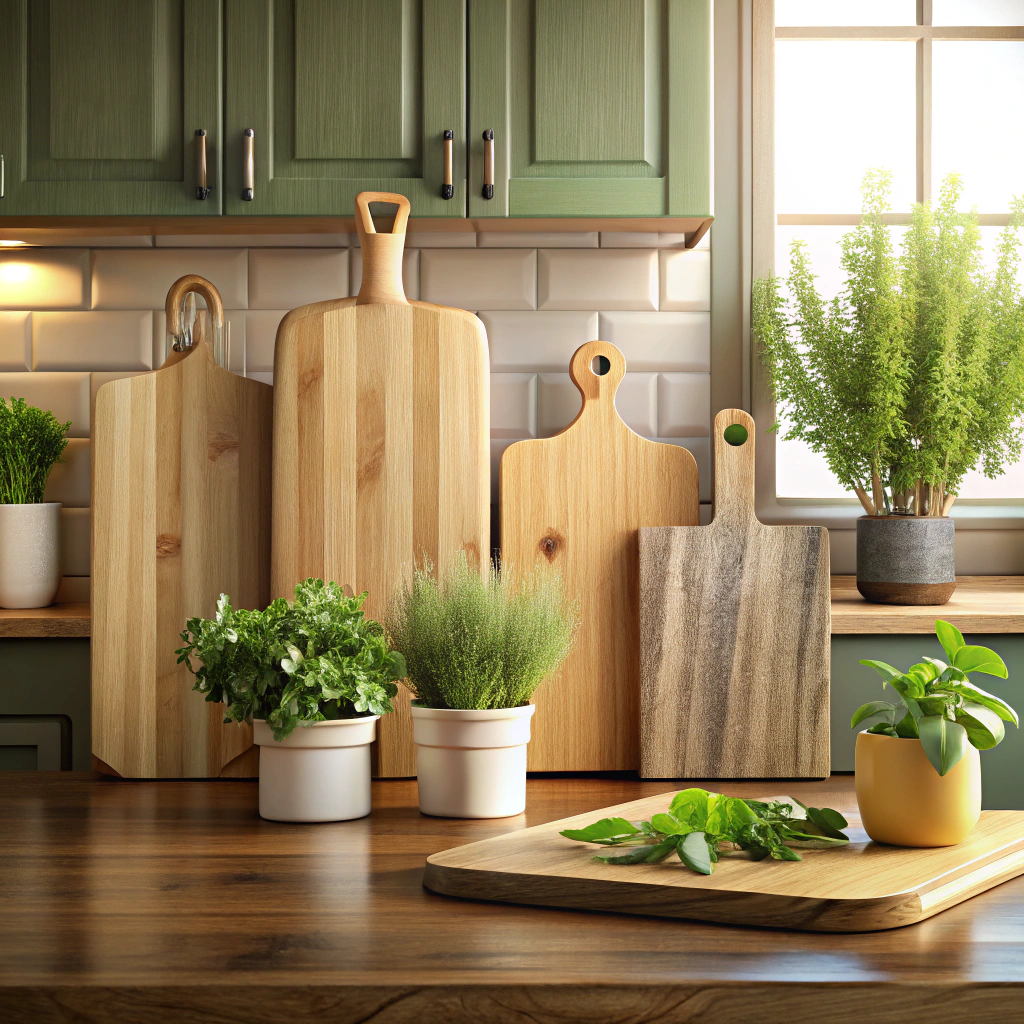Last updated on
Discover how much weight your kitchen cabinets can safely support and avoid post-storage splinters and disasters.
Ever wonder if your kitchen cabinets can handle your cast iron collection without turning into a pancake? You’re in the right place! Whether you’re pondering over engineered masterpieces or sturdy basics, knowing how much weight they can bear is crucial. We’ll delve into industry standards, dissect the materials and construction techniques that affect weight capacity, and decode mounting methods. Plus, we’ll dish out pro tips for storing those hefty items, so your cabinets don’t develop an “oops” face. Ready for more shelf-supporting wisdom? Stick around, and watch your cabinets flex with confidence!
Key takeaways:
- Most kitchen cabinets hold about 500 pounds.
- Cabinet construction affects weight capacity significantly.
- Solid wood is strongest; choose materials wisely.
- Proper mounting ensures cabinets support more weight.
- Signs of overload include sagging shelves and creaks.
What's Inside
Industry Standards for Weight Capacity

Most kitchen cabinets can typically hold about 500 pounds. This is assuming the cabinet is well-constructed, properly mounted, and you haven’t mistaken it for a bookshelf crammed full of encyclopedias.
Manufacturers have thankfully ventured into the realm of sturdy construction, offering robust slabs of wood or durable composites. Good news, your canned goods collection might stay airborne even during an epic ketchup apocalypse.
It’s not all about brute strength. Design standards often guide the load capacity, ensuring cabinets can comfortably bear the weight of a small goal-scoring child without wincing.
The standards act like the gym coaches of the cabinet world. They ensure your shelves have done the lifting exercises necessary to accommodate everything from pots and pans to the seemingly insignificant weight of your secret snack stash.
Remember, it’s a standard—not a challenge. Avoid using your kitchen cabinet as a makeshift step-ladder. It won’t thank you for it, and you might end up impersonating Humpty Dumpty!
Features of Quality Cabinets Affecting Weight Capacity
Sturdy cabinets boast diligent craftsmanship and attention to detail. First, consider the thickness of shelves. A thick shelf can carry more weight, similar to how an elephant would choose a sturdy tree over a twig for a quick nap.
Next, observe the quality of the joinery. Dovetail joints are the heavyweight champions here. They interlock like best friends, providing a strong connection compared to flimsy butt joints, which are more like fair-weather pals.
Also, check out the back panel. A robust, full-length back panel adds crucial support. It’s like the unsung hero of a cabinet ensemble, silently supporting the whole structure.
Lastly, quality hinges and brackets should be considered. They might not be the star of the show, but when they fail, it’s like the kitchen version of a wardrobe malfunction.
Materials Used in Cabinet Making
The type of material used in cabinets plays a pivotal role in determining how much weight they can hold. Picture this: you wouldn’t use a butter knife to slice through a T-bone steak, right? Similarly, materials matter a lot in cabinetry.
Solid wood, like oak or maple, is the heavyweight champion of cabinet materials. These can hold the heaviest loads without breaking a sweat, not to mention looking snazzy. But if your budget is tighter than your skinny jeans after a holiday feast, particle board and MDF are cost-effective alternatives. Just don’t gamble with granite countertops on these—think more along the lines of canned goods or your great aunt’s porcelain collection.
For the DIY enthusiasts, plywood is like the trusty sidekick. It’s strong, light, and reliable, perfect for those who enjoy a weekend project without the fear of disaster.
Materials have their quirks and perks, much like holiday dinners with the family. Choose wisely based on your storage needs.
Influence of Construction Techniques
Construction techniques play a pivotal role in the weight-bearing abilities of kitchen cabinets. Here are the key points to consider:
First up, the joinery. Dovetail joints, for example, provide excellent strength and are a carpenter’s secret handshake. Butt joints? Not so much, they tend to wave the white flag too soon.
Full back panels add sturdiness. Think of them as the backbone of a cabinet, quite literally. Opting for flimsy backings is akin to trusting a rubber band to hold a load—it might work, but it’s a gamble.
Shelf thickness matters. A 3/4-inch plywood shelf can bravely carry more than its 1/2-inch counterpart. It’s the Hulk of shelf options.
Finally, bracing is essential. Cross braces add support and banish the dreaded sag. Without them, heavy pots might find themselves on an unintended journey to the floor.
So, when you’re eyeing those cabinets, take a peek at how they’re put together. Your dishes (and your toes) will thank you.
Mounting Methods’ Impact On Weight Capacity
Mounting a cabinet isn’t just a test of your handyman skills; it’s a critical factor in how much weight a cabinet can bear. Think of it as securing a trapeze artist to the ceiling—sturdy bolts and brackets are essential for a successful performance.
- Wall Material Matters: Drywall alone? Bad idea. Use studs for any serious load-bearing work. Nobody wants a cabinet collapse to redefine “kitchen disaster.”
- Anchors and Screws: Heavy-duty screws are your best friends. Upgrade from the basic ones that come with the cabinet. It’s not the time to be thrifty.
- Type of Mount: Right-angle brackets or ledger boards can transform your cabinet into a weight-lifting champ. They distribute weight more evenly.
- Cabinet Positioning: Lower cabinets naturally support more weight than overhead ones. It’s all about gravity—who knew physics would pop up in kitchen talk?
Cabinet mounting is no joke. One poor screw choice, and you’re fishing your dinnerware from broken plates. Better safe than sweeping!
Avoiding Damage From Heavy Items
Let’s keep those cabinets intact, shall we? It’s all fun and games until your pasta collection brings the whole shelf down — yikes!
First, distribute weight evenly. Heavy items like cast iron pots should not congregate on one side like they’re planning a secret meeting. Spread them out to share the load with less weighty items like fluffy marshmallows.
Consider using cabinet liners or mats. They not only keep things tidy but also add a bit of grip, preventing unwanted slip ‘n’ slide incidents that might scuff or stress cabinet surfaces. Plastic liners are a cabinet’s best friend even if they won’t respond to text messages.
Reinforce shelves if you notice any sagging. Sometimes all it takes is adding an extra support bracket or two to fortify those saggy shelves. Your DIY spirit will get a high-five, and so will your kitchen!
Lastly, know your cabinet limits. Avoid stacking items like you’re playing a game of Tetris, hoping for the best. This isn’t a video arcade; nothing should be on the verge of tumbling down. Take heed and store wisely.
Tips for Storing Heavy Items
Now, onto the good stuff. How do you store those hefty kitchen items without turning your cabinets into the Leaning Tower of Pisa?
First, consider placing heavier items in the lower cabinets. Gravity is your friend here. Using bottom cabinets will prevent tipping and provide more stability.
Distribute weight evenly across the cabinet. Picture it like a see-saw. Placing equal weight on both sides prevents the shelf from doing a tragic impression of a hammock.
Use shelf liners with non-slip surfaces. They keep items in place, creating a tiny bit of friction to prevent your cast iron from sliding around like it’s on a funfair ride.
Consider adjustable shelves. Customizing your shelves to fit your items like Cinderella’s shoe can help distribute weight and make better use of space.
Finally, heart-to-heart, listen to your cabinets. Creaks and groans are not just for haunted houses. They might be warning you that they can’t carry the load, so lighten it up before it’s too late. Your cabinets will thank you.
Signs of Overloaded Cabinets
When your cabinets start to resemble a scene from a suspense thriller, it’s time to pay attention. Listen to the ominous creaks and groans. They’re not your cabinets auditioning for a horror film. They’re screams for help!
Watch out for sagging shelves. If they look like they’re taking the shape of a sad smile, it’s a warning sign. Shelves should remain straight and level, not doing the limbo.
Check the cabinet doors too. If they refuse to close properly, they’re not just being stubborn. Those are hints they might be struggling with a hefty internal secret.
Notice any paint or wood warping? That’s the cabinet equivalent of a nervous sweat. No acrobatics should ever bend your cabinetry.
Lastly, if the wall or cabinet joints are loosening, your cabinet might be waving the white flag. Don’t let it turn into a game of Jenga. Keep an eye out before things come crashing down, literally.
Modifying Cabinets for Increased Capacity
Sure, you want to bulk up those kitchen cabinets to better handle your collection of cast iron pots, the encyclopedia of recipe books, or that crockpot hobby you’ve got going? Here’s how.
One option is beefing up the shelves with thicker plywood, ideally three-quarters of an inch or more. Ah, the beauty of sturdy wood! It’s like trading a flimsy lace parasol for a trusty shield.
Reinforce the shelf brackets. Swap out those scrawny plastic brackets for robust metal ones. They provide better support and won’t complain when you load up.
Consider adding extra shelves. More shelf levels mean better distribution of weight. It’s like spreading jam on toast; uniformity is your friend.
Upgrade to heavy-duty mounting anchors for wall cabinets. If it feels like you’re hanging a small sedan, you’re on the right track.
Finally, try installing a center support rail. It acts like the unsung hero of a superhero movie, silently holding everything up.
With these tweaks, your kitchen cabinets will be the Hercules of storage, ready to handle whatever culinary challenges come its way. Keep the balance right, and all will be well in the world of organized cabinets.




